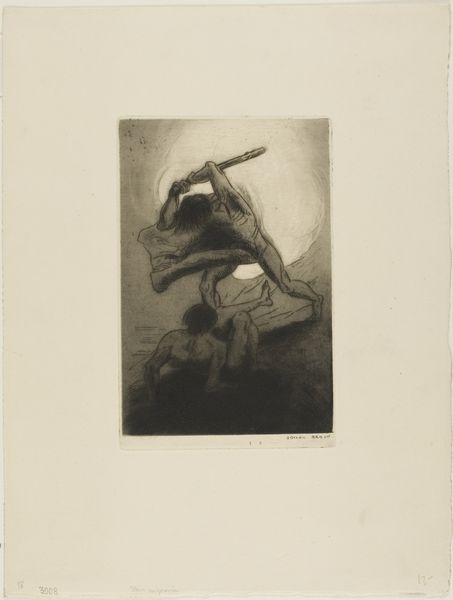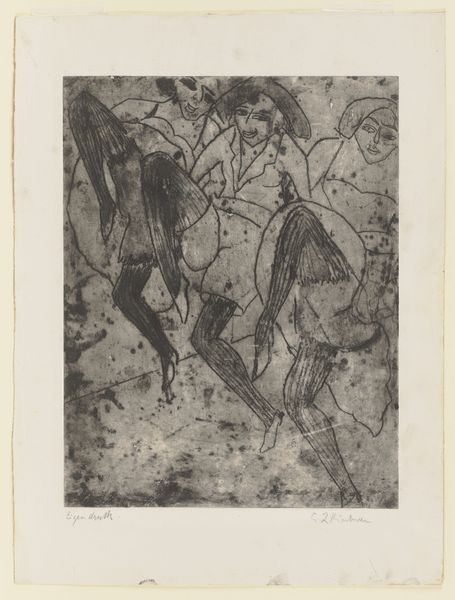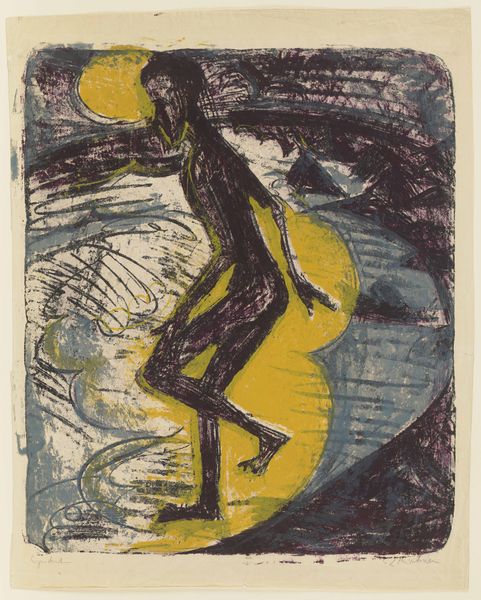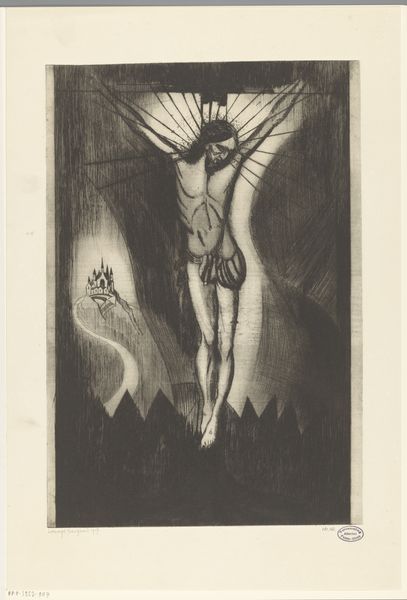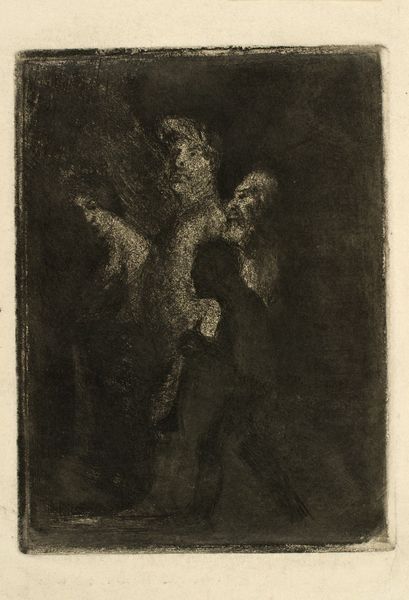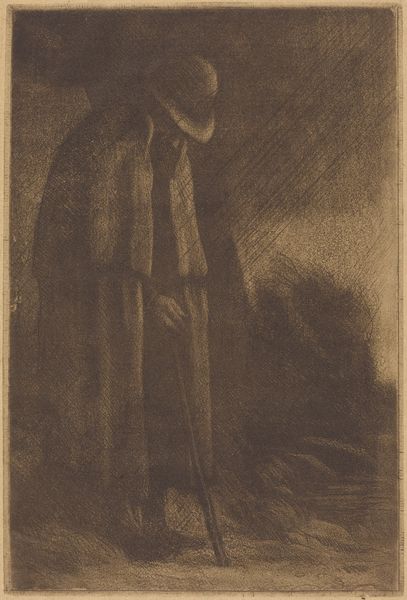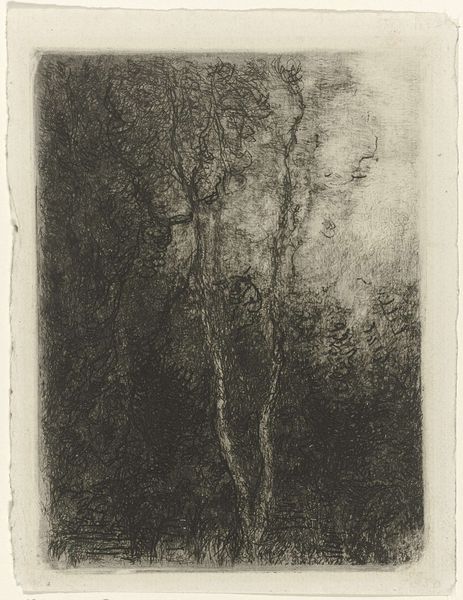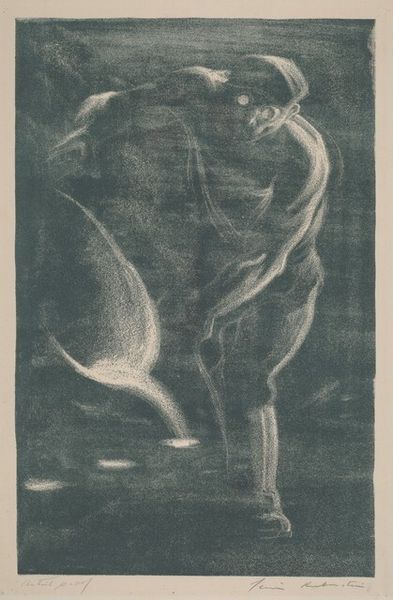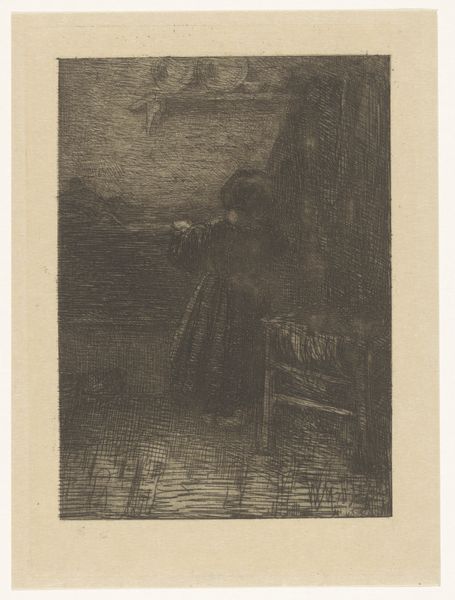
print, etching
#
narrative-art
# print
#
etching
#
landscape
#
figuration
#
symbolism
Dimensions: plate: 27.7 x 20.9 cm (10 7/8 x 8 1/4 in.) sheet: 37.6 x 26.4 cm (14 13/16 x 10 3/8 in.)
Copyright: National Gallery of Art: CC0 1.0
Curator: What a striking image! This is Felicien Rops' etching, "Satan Sowing Tare." Notice how the figure dominates the landscape, almost seeming to stride out of the print itself. Editor: It certainly gives me the creeps. The scale is unsettling—is that supposed to be Satan? The being seems carelessly gigantesque and horribly unnatural compared to the faint and smudged city in the far off. The etching looks quick but considered at the same time... Curator: Yes, the subject is indeed Satan, rendered with Rops' signature Symbolist flair. Look at the confident contrapposto. Observe, too, how the line work and dark tonalities establish the drama through contrasts between texture and implied form. Even in monochrome, Rops has generated depth. Editor: I'm more intrigued by what Rops is *doing* than how it looks at first glance. You know, how the material process translates here? An etching necessitates acid biting into the metal plate to hold ink. The cross-hatching seems laborious, which suggests Rops labored *intensively*. Why this time-intensive technique? And why here? Curator: The intensive labor that you pinpoint definitely allows the viewer to understand better the allegory and grasp the thematic substance presented within the artwork; indeed, the cross-hatching seems a structural effort for detailing. The use of symbolic forms such as the shadowy silhouette that defines the ominous sky leads you toward meaning, not just sensation. Editor: Well, consider the late 19th-century printmaking market: affordable art. A reproduction meant for widespread distribution. Was Rops deliberately making it so Satan, this embodiment of chaos, would disseminate so readily throughout culture using modern methods? Was he, ironically, working alongside capitalism? The visual outcome obscures a really fascinating production network. Curator: It is true that his artistic commentary contains references that we may never know or decipher in their totality, though in terms of the semiotic composition, that dark form in a barren land implies clear themes. Perhaps our interpretations should hinge upon that form? Editor: Fair point. I can certainly concede to that. Regardless, it's a discomforting image from the point of its making through to the point of it reaching us. Thanks, Felicien Rops. Curator: An uncomfortable beauty indeed. Hopefully this work challenges us to think deeply about moral ambiguity in visual language.
Comments
No comments
Be the first to comment and join the conversation on the ultimate creative platform.
